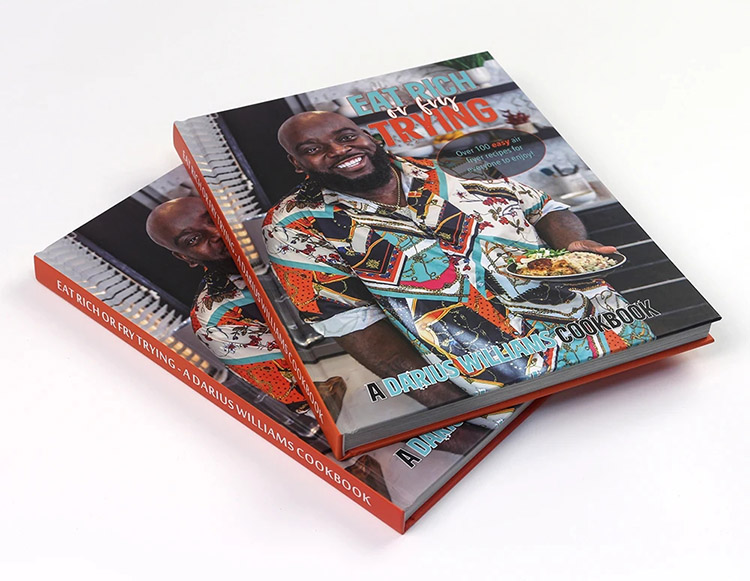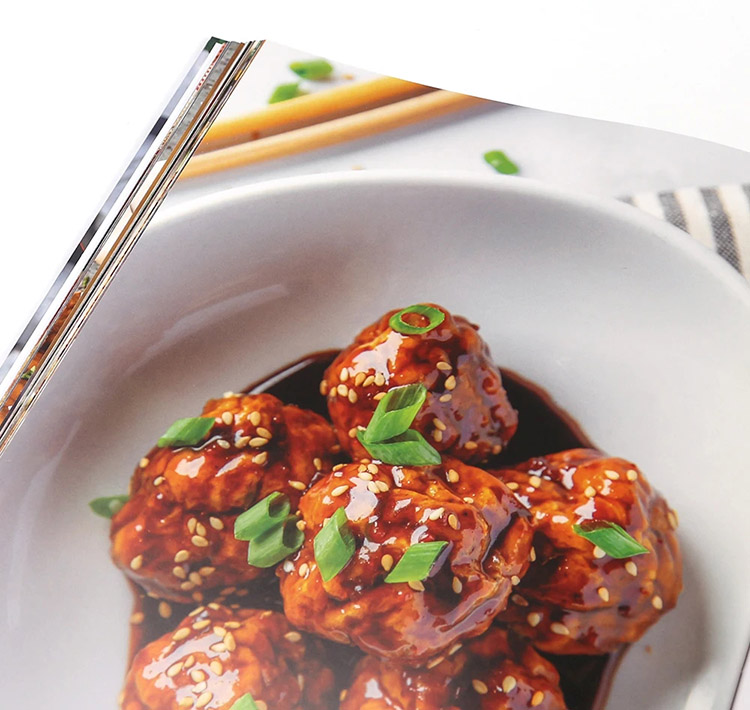As a professional China printer, I understand the importance of choosing the right paper for custom cookbook printing. The paper quality plays a crucial role in enhancing the visual appeal and durability of the cookbook. In this article, I will discuss factors to consider when choosing paper and which paper is best for cookbook printing. Whether you're a self-publishing author or a professional chef looking to create a beautiful cookbook. This article will provide valuable insights to help you make an informed decision.

Factors to consider when choosing cookbook printing paper
1. Finish:
The finish of the paper is an essential consideration when printing a custom cookbook. A glossy finish offers a brightness and reflective surface, which can make images and colors appear more vibrant and eye-catching. On the other hand, a matte finish provides a non-reflective, smooth surface that reduces glare and is ideal for a more elegant look. When deciding between glossy and matte finishes for your custom cookbook. It's crucial to consider the visual aesthetic you want to achieve. For vibrant, colorful images, a glossy finish may be more suitable, while a matte finish can exude a more refined and classic appeal.
2. Coating
The coating of the paper significantly impacts its durability and the look and feel of the cookbook. Coated paper is treated with a layer of chemicals or clay to enhance its smoothness and printability. This coating not only improves the color reproduction and sharpness of images but also provides protection against moisture and wear. On the other hand, uncoated paper has a more natural and textured feel, making it suitable for a rustic or artisanal cookbook. When choosing the coating for your custom cookbook printing. You need to consider the intended use of the cookbook and the level of protection and aesthetic appeal you desire.
3. Weight
The weight of the paper is a critical factor in determining the quality and durability of the custom cookbook. Paper weight is measured in grams per square meter (gsm), and a higher gsm indicates a thicker and more substantial paper. For a professional and long-lasting cookbook, it's advisable to opt for a higher paper weight to prevent ink from bleeding through and to provide a sturdy feel to the pages. But, the choice of paper weight should also align with the design and layout of the cookbook. Because a heavy paper may not be suitable for certain binding styles or page counts. Balancing the weight of the paper with the practicality and aesthetic requirements of the cookbook to achieve a successful printing outcome.
4. Sustainability
In today's environmentally conscious world. The sustainability of the paper used for cookbook printing is a significant consideration for many authors and publishers. Opting for eco-friendly and responsibly sourced paper demonstrates a commitment to environmental stewardship and can resonate with environmentally conscious readers. Look for paper that is certified by credible organizations. Such as the Forest Stewardship Council (FSC) or made from recycled materials. Choosing sustainable paper for your custom cookbook not only aligns with ethical and environmental values but also contributes to a positive brand image and consumer perception.
Coated paper or uncoated paper for cookbook printing?
For cookbook printing, the choice between coated and uncoated paper is a pivotal decision that impacts the look, feel, and functionality of the cookbook. Coated paper, with its smooth and glossy surface, is ideal for showcasing vibrant images and colors. It is ideal for visually striking cookbooks with high-quality food photography. The coating on the paper provides protection against stains and moisture, ensuring that the pages maintain their visual appeal and durability over time. However, the glossy finish of coated paper may not be suitable for cookbooks aiming for a more natural and rustic aesthetic.
On the other hand, uncoated paper offers a more tactile and organic fee. It is well-suited for cookbooks that emphasize a homemade or artisanal approach. The natural texture of uncoated paper can enhance the authenticity of recipes and evoke a sense of warmth and tradition. While uncoated paper may not showcase colors and images as vividly as coated paper. It provides a distinct charm and character that appeals to certain culinary themes and storytelling elements. The choice between coated and uncoated paper should align with the visual and thematic goals of the custom cookbook, as well as the intended reader experience.
Cover paper of cookbook
The cover paper of a custom cookbook holds immense significance. As it serves as the first point of contact for readers and conveys the overall style and quality of the publication. When selecting the cover paper for printing your cookbook, you need to consider factors such as durability, design elements, and the desired tactile experience. A high-quality cover paper with a protective coating can enhance the longevity of the cookbook and make a strong visual impact. Whether opting for a glossy or matte finish, the cover paper should be able to withstand handling and storage while maintaining its aesthetic appeal.
Apart from durability, the design and tactile qualities of the cover paper play a crucial role in capturing the essence of the cookbook. For a modern and sleek cookbook, a glossy cover paper with a striking image or design can create a visually compelling presentation. But, a matte cover paper with a soft-touch finish can exude elegance and sophistication, appealing to readers seeking a more refined culinary experience. The choice of cover paper should harmonize with the overall theme and branding of the cookbook, reflecting the author's culinary style and storytelling approach.
Interior paper of cookbook
The interior paper of a cookbook is where the recipes, images, and culinary narratives come to life. So you need to select the right paper that complements the content and enhances the reader experience. When considering the interior paper for custom printing cookbook, the choice between glossy and matte art paper can impact the visual presentation and reading experience. Glossy art paper, with its reflective surface and vibrant color reproduction. It is well-suited for cookbooks that emphasize visually stunning photography and vibrant food images. The glossy finish can make the images pop and create a visually captivating experience for the reader.
But, matte art paper offers a non-reflective and smooth surface. It can impart a sense of elegance and sophistication to the cookbook's content. This type of paper is ideal for cookbooks that prioritize a more subdued and refined aesthetic. It allows the images and text to be showcased with a timeless and understated appeal. The choice between glossy and matte art paper depends on your personal choice.

Common paper for cookbook printing
|
Cover Paper
|
Interior paper
|
200gsm glossy cover paper
|
128gsm glossy text paper
|
250gsm glossy cover paper
|
157gsm glossy text paper
|
300gsm glossy cover paper
|
200gsm glossy text paper
|
350gsm glossy cover paper
|
128gsm matte text paper
|
200gsm matte cover paper
|
157gsm matte text paper
|
250gsm matte cover paper
|
200gsm matte text paper
|
300gsm matte cover paper
|
|
157gsm glossy cover paper wrapped on 2mm/2.5mm/3mm gray board
|
|
157gsm matte cover paper wrapped on 2mm/2.5mm/3mm gray board
|
|
Other material, like cloth, special paper, etc. wrapped on gray board
|
|
Conclusion
Selecting paper for custom cookbook printing is a key decision that encompasses visual aesthetics, tactile qualities, durability, and thematic alignment. After considering factors such as finish, coating, weight, and sustainability. Authors and publishers can make informed choices that elevate the quality and appeal of their custom cookbooks. Whether opting for glossy or matte finishes, coated or uncoated papers, the right paper selection can enhance the reading experience and visual impact of the cookbook. As you embark on the journey of custom cookbook printing and binding. I encourage you to explore the diverse paper options available and select the one that best reflects your culinary vision and resonates with your audience.
If you want to custom your cookbook with the perfect paper selection, contact us for expert guidance and high-quality printing services.